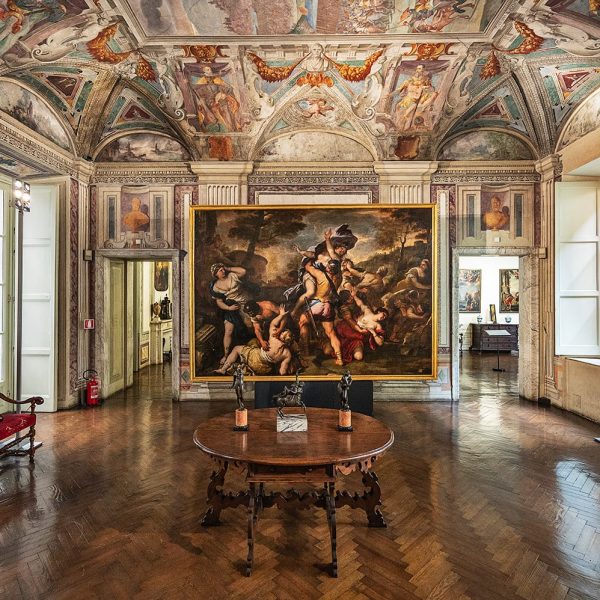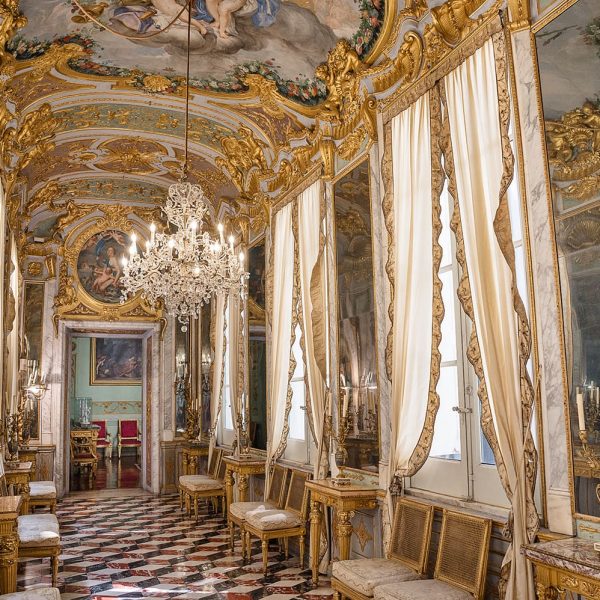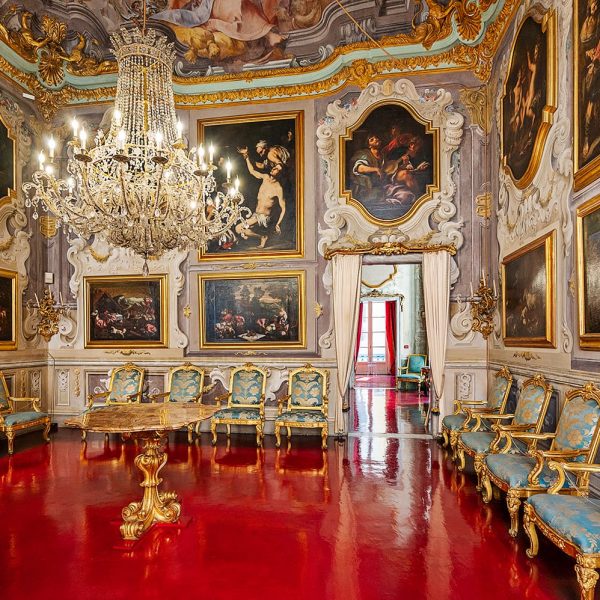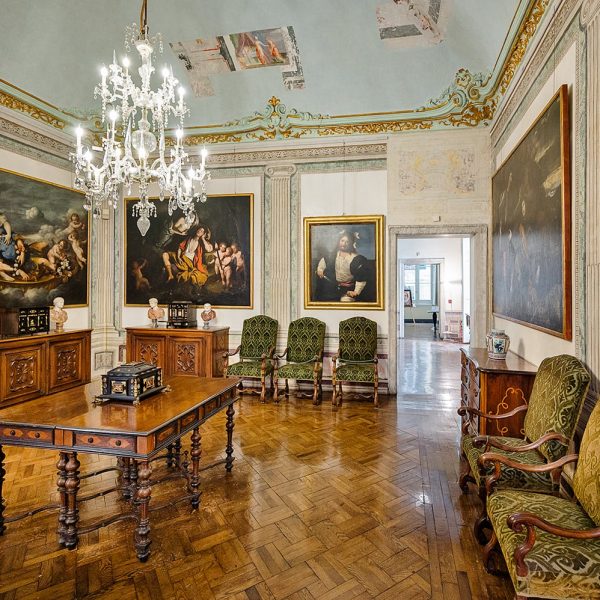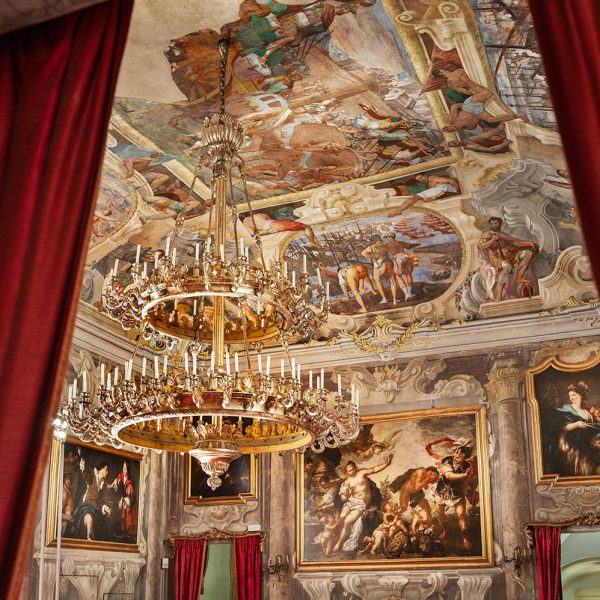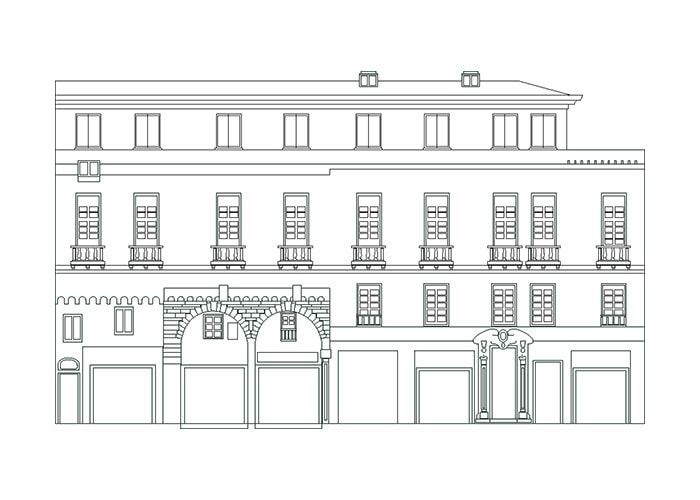
35. Palace of Nicolò Spinola
25 March 2022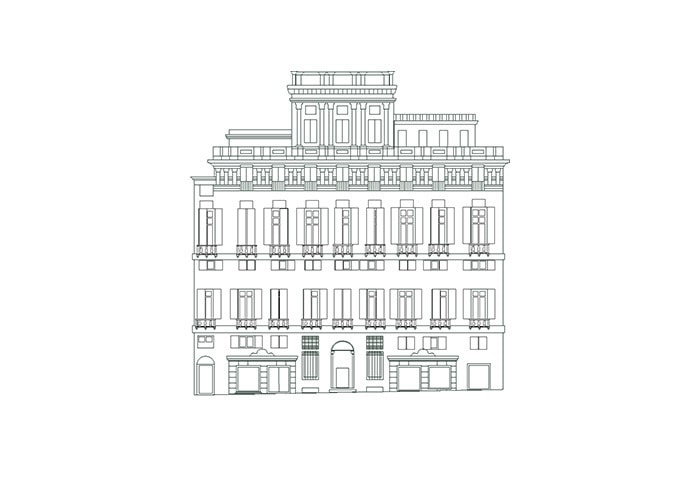
37. Palace of Gio Battista Grimaldi
25 March 2022Palazzo Spinola di Pellicceria, built by Francesco Grimaldi at the end of the 16th Century, appears constantly in the list of palazzi included in the “Rolli” system, the system whereby residences were extracted by lot to provide reception facilities for official guests of the city. This was due to the fact that the Republic did not possess its own official premises in which to receive, meet and provide hospitality as part of its own diplomatic functions.
The Genoese residences are hence described by chroniclers of the time as palatial due to their extraordinary artistic decor and stunning picture galleries contained therein, but also due to the public, and not only private, role that they were required to perform. The decor of the rooms meant that Palazzo Spinola di Pellicceria was considered a residence worthy of hosting the highest ranking persons on ceremonial occasions. The social role of the owner was obviously meant to be a contributory factor and there is no doubt that the transfer of ownership from the Grimaldi family to Tommaso’s brother-in-law, Ansaldo Pallavicino, conferred on this residence a certain kudos. In fact, he was the son of one of the most eminent protagonists of political life due both to the rôle that he played in lively ideological debate and, primarily, due to his public career which led him to the ducal seat in 1637. Ansaldo was responsible for a number of basic acquisitions made to create the palazzo’s picture gallery which is largely conserved today. These works include in particular those by his favourite painter, Giovanni Battista Castiglione known as il Grechetto, but also feature his father’s paintings, one of the first patrons of the Flemish painter Anton Van Dyck as soon as he arrived in the city, by whom he was painted twice.
This key 17th Century stage of the palazzo’s life is evident when visiting the first floor of the building where a recent restoration has managed, most extraordinarily, to restore the integrity of the fresco decoration of the room walls, carried out by Lazzaro Tavarone. This contains the paintings introduced by the Pallavicino family, and the furnishings of the period in which they inhabited the building. This could be said to provide documentary proof of the quality of Genoese aristocratic residences at that time.
Going up a floor leads to areas with strong features characteristic of the decorative style of the 18th Century, a distinctive mark left by the general redecoration of the building commissioned by Maddalena Doria, who inherited the palazzo in 1734. This explains why the palazzo acquired the name of Spinola since she was the wife of the same Nicolò Spinola di San Luca who would become doge in 1740. This was after he had presented himself to the city with a residence that Maddalena had made one of the most up to date and in tune with the style of the time, with the room frescoes credited to Sebastiano Galeotti and Giovanni Battista Natali, but primarily to Lorenzo De Ferrari. The latter, in particular, is attributed with the exceptional decor of the “gallery of mirrors” built by joining two wings of the palazzo and restoring the stucco work on the façades to create an architectural aspect quite different from that documented originally in the etching of the elevation included by P. P. Rubens in his volume, published in Antwerp 1622, dedicated to the most important palazzi in Genoa.
Within the new decorative context created by the frescoes, first Maddalena and then her heirs added the palazzo’s picture gallery to contain works by the most prestigious Ligurian painters – Antonello da Messina, Luca Cambiaso, Bernardo Strozzi, Gregorio de Ferrari, Grechetto – but also masterpieces by Italian artists, ranging from Guido Reni to Luca Giordano, and masterpieces by Flemish artists such as Joos van Cleve.
The age-old history of the Pellicceria palazzo as a residence for the most prestigious families of the old Republic of Genoa – Grimaldi, Pallavicino, Doria, Spinola – ended with the last Spinola heirs, Paolo and Franco, who donated the building, and all the assets collected therein over the centuries, to the State in 1958 for it to become a National Gallery. They did, however, attach a precise condition to this endowment, being fully aware of the value of the overall building and the context, which was far greater than the value of the individual works. In fact, their explicit wish was that the palazzo, once it had become a museum, should preserve its residential character “whatever museological style might become popular”.
In keeping with this wish, the museum’s mission, thanks to the perfect state of conservation of the property’s living quarters, is to document the golden century of the old Genoese Republic as reflected in one of its key aspects, namely the prestige of the residences of the influential aristocracy.
This wish has also guided the museological and scientific choices made in the last two decades as regards the two preserved floors.
By contrast, the principle followed, and the resultant decisions, regarding the museological layout of the last two floors are through necessity quite different. These floors were seriously damaged by the city’s bombardment in the last war when an incendiary device caused a fire which damaged the Tavarone fresco in the second floor salon: being well aware of the condition of these floors, by now devoid of any artistic or historic significance, the Spinola heirs did not make their conservation a condition in the deed of endowment and had proposed even then that they could possibly be used to house the National Gallery of Liguria, being set up at that time. They envisaged a museum site for displaying the acquisitions of the Italian State, in addition to the Spinola endowment, aimed at enriching Liguria’s heritage.
Despite the fact that the architectural aspect of this part is necessarily quite different, it was decided that the theme chosen for the museum-residence should also blend with, and not diverge from, the layout and contents conserved and displayed on the first two floors, in other words that the two areas should complement one another. And so the very strict guidelines adopted when choosing permanent acquisitions and deciding on temporary exhibitions were based on the collecting habits of aristocratic families, Genoese picture galleries and the furnishings of 17th-18th Century residences.
Hence Filippo Parodi’s Spinola cornice with the The Myth of Paris complements Love and Adonis by the same artist; the extraordinary Equestrian portrait of Gio. Carlo Doria, a masterpiece by P. P. Rubens, complements the testimony on the Flemish portrait painters as regards the works of Van Dyck for Agostino Pallavicino; the oriental porcelains adorning Maddalena Doria’s rooms on the second floor, along with the drapes and velvet and damask-covered seats, reflect the theme of the fourth floor housing the ceramic legacy left by the Spinola family and the textile section created from important acquisitions from local collectors and now host to a section of the “DVJ-Damask, velvet, jeans educational Centre”.
Updated bibliography post 1998
E. Poleggi, Genova. Una civiltà di Palazzi, Cinisello Balsamo (Milano) 2002, pp. 117-121 (Palazzo di Francesco Grimaldi (1593)).
L’eredità donata. Franco e Paolo Spinola e la Galleria Nazionale di Palazzo Spinola, a cura di Farida Simonetti, Torino 2009.
The texts have been updated thanks to the INSIDE STORIES project financed with funds - Law no. 77 of 20 February 2006 "Special measures for the protection and enjoyment of Italian sites of cultural, landscape and environmental interest, included in the "World Heritage List", under the protection of UNESCO.
- Ph: CA Alessi
- Ph: CA Alessi
- Ph: CA Alessi
- Ph: CA Alessi
- Ph: CA Alessi



